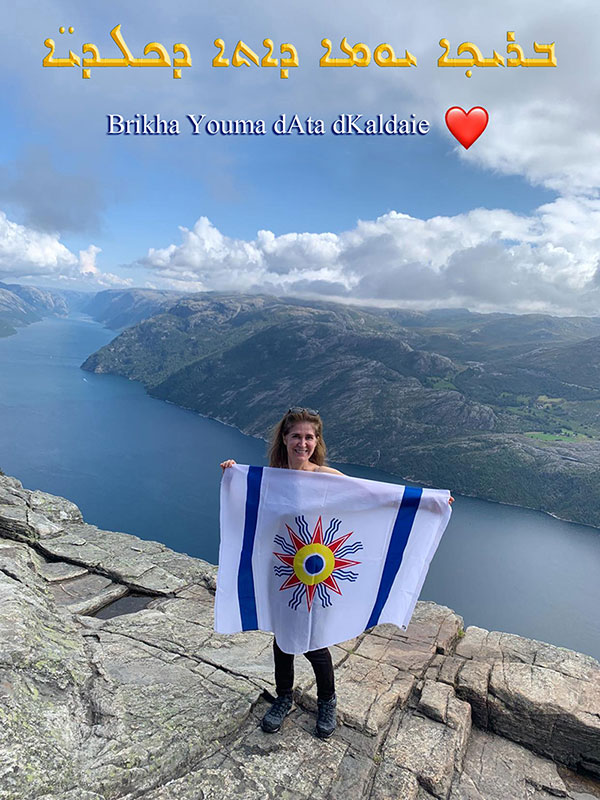|
| ||
| Home | Legacy | Flag A-Z | Photos | About ICA | Links | ||
| Chaldean National Flag A – Z 1985- Present |
 |
| Spotlight |
The current version of the Chaldean National flag was designed among other suggested designs in 1985 and was appreciated by scholars. However, it was officially and worldwide recognized by the International Chaldean Visual Artists Association in 1997. Since its adoption, it proved to be a symbol of pride and unity among Chaldeans. Due to the fact that its genuine symbols are derived from their journey of over 7300 years. In other words, it represents the Chaldeans’ true national identity. Since April 2011, Chaldeans around the world celebrated the 7311AKITU festival (Chaldean Babylonian New Year). Chaldeans in Iraq and all over the world, young and old, proudly took to the streets in joyous parades carrying the Chaldean National Flag of all sizes. In 2011 and 2013, the two Chaldean International Conventions in San Diego, California, and in Southfield, Michigan, USA unanimously approved the flag as the only legitimate Chaldean National Flag that represents our Chaldean Nation. Description of the Chaldean Flag Visual Elements of the Chaldean Flag Chaldean Flag Day |
The CHALDEAN NATIONAL EMBLEM 1997 | |
 | |
The sun (Eightfold Star) refers to the aforementioned definitions of the Flag. The Spouting Vase (The Life Spring) of the Emblem is a Mesopotamian Proto-Kaldi symbol that refers to fertility, renewal, and growth. So here the vessel stands for the Land of the two rivers, whereas the two right and left currents represent the Tigris and the Euphrates. CHALDEAN FLAG & EMBLEM, Their Purpose Using the uniting symbol of the Chaldean Nation Flag and the Emblem in the national festivities, political & cultural events, along with all ethnic occasions and celebrations, also for acknowledging the remarkable cultural contributions of the indigenous people of Iraq / Chaldean Babylonians. |

|
About the Artist / Designer To learn more about the Chaldean flag and emblem, visit: www.chaldeanflag.com See also: Why The CNF Was Copyrighted?
Courtesy of A. H. Fatuhi | UR Magazine | |
LEGAL WARNING CHALDEAN NATIONAL FLAG is For All CHALDEANS
However, using any of the above Suggested versions (1-11) for profit without the expressed permission of the designer will subject the user to legal liability. The Official CHALDEAN FLAG website, owned and run by CECA
| |